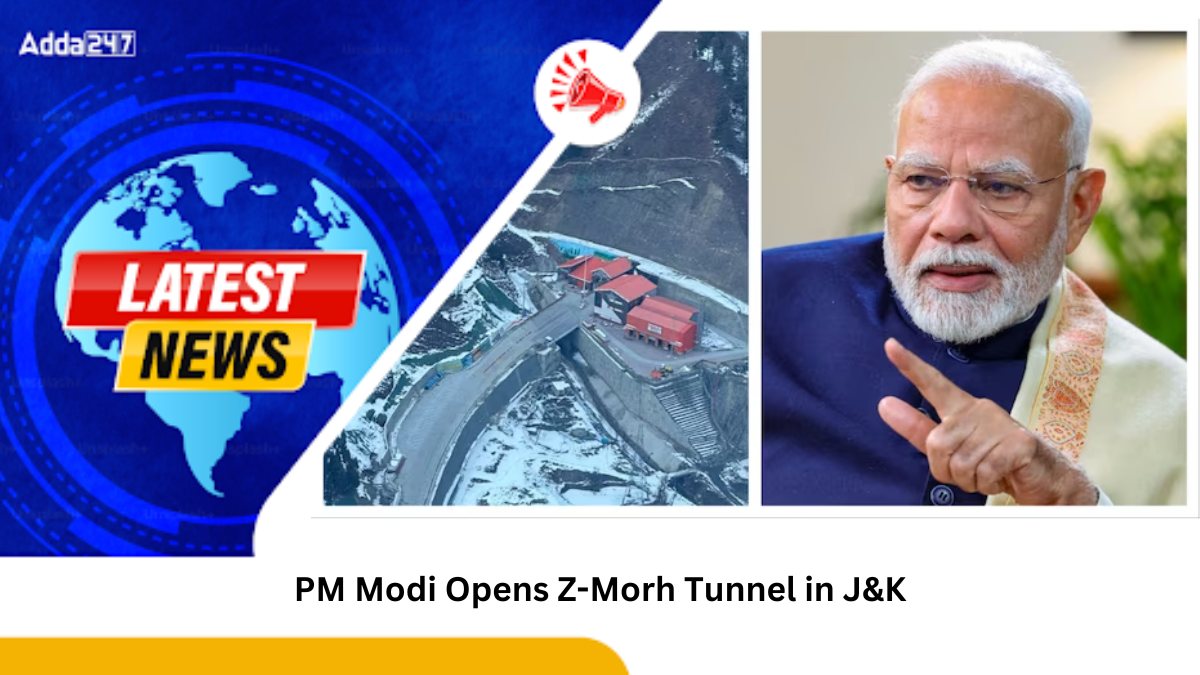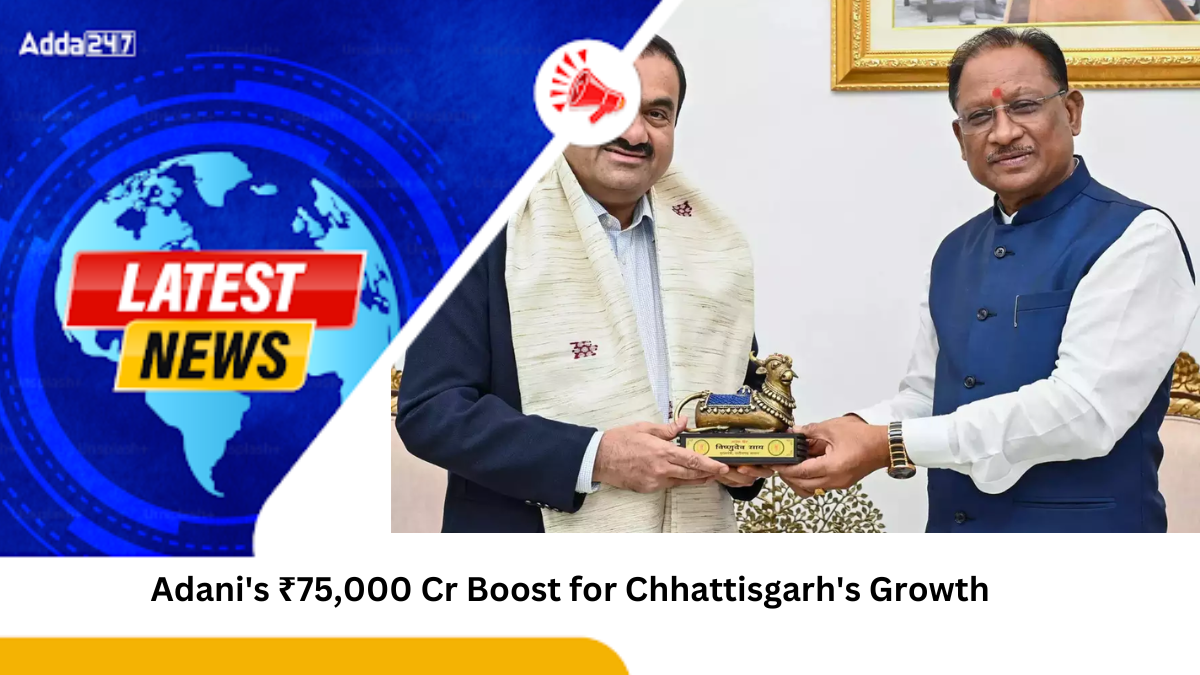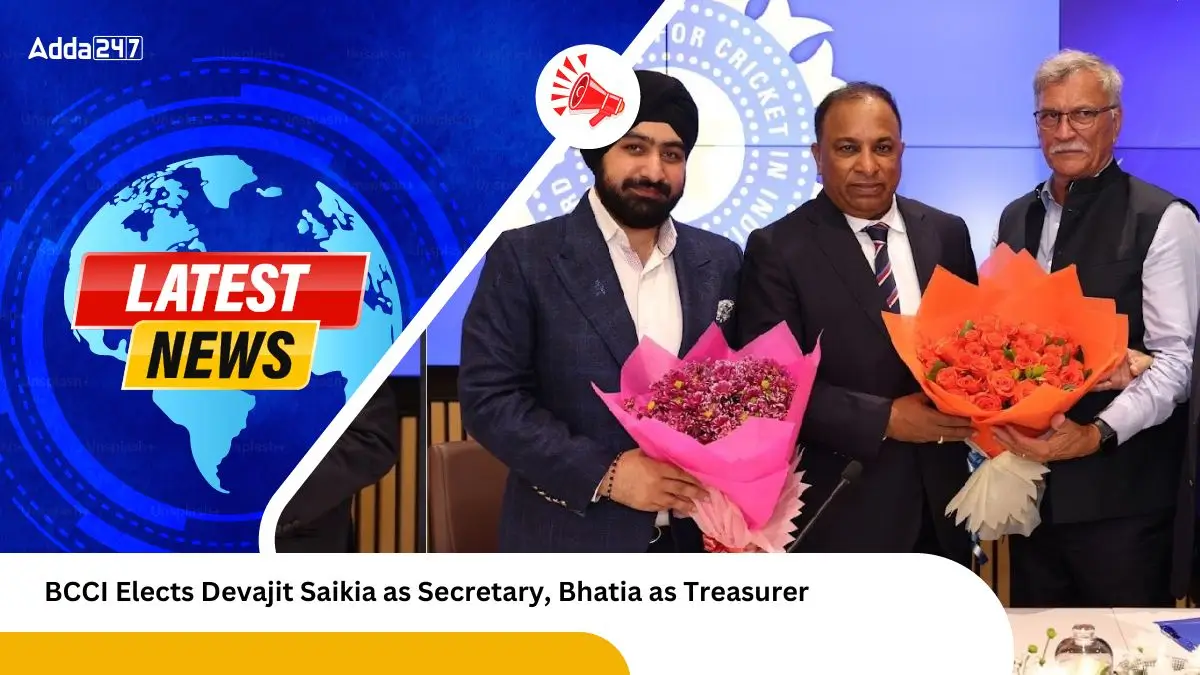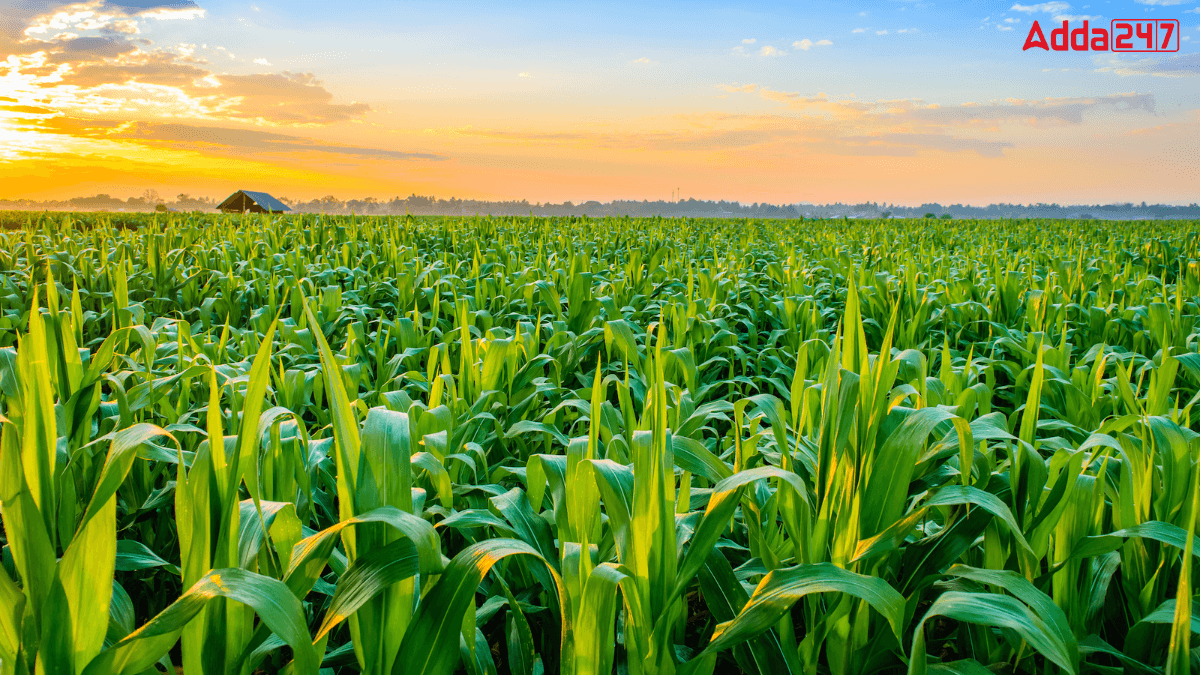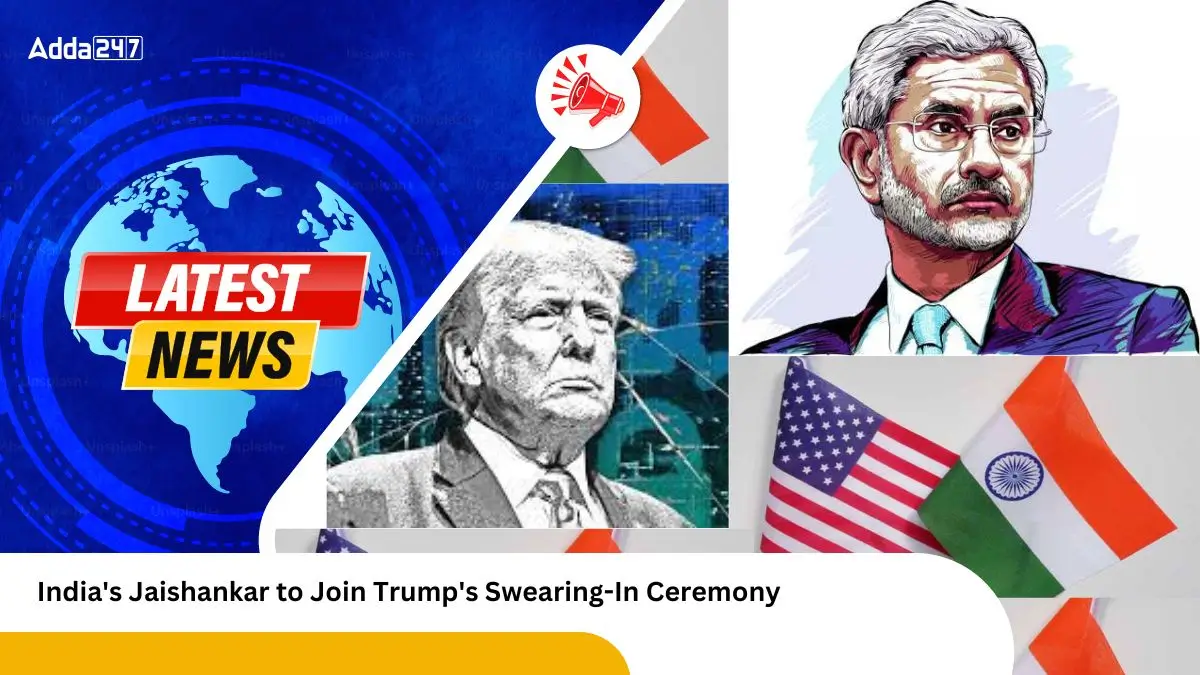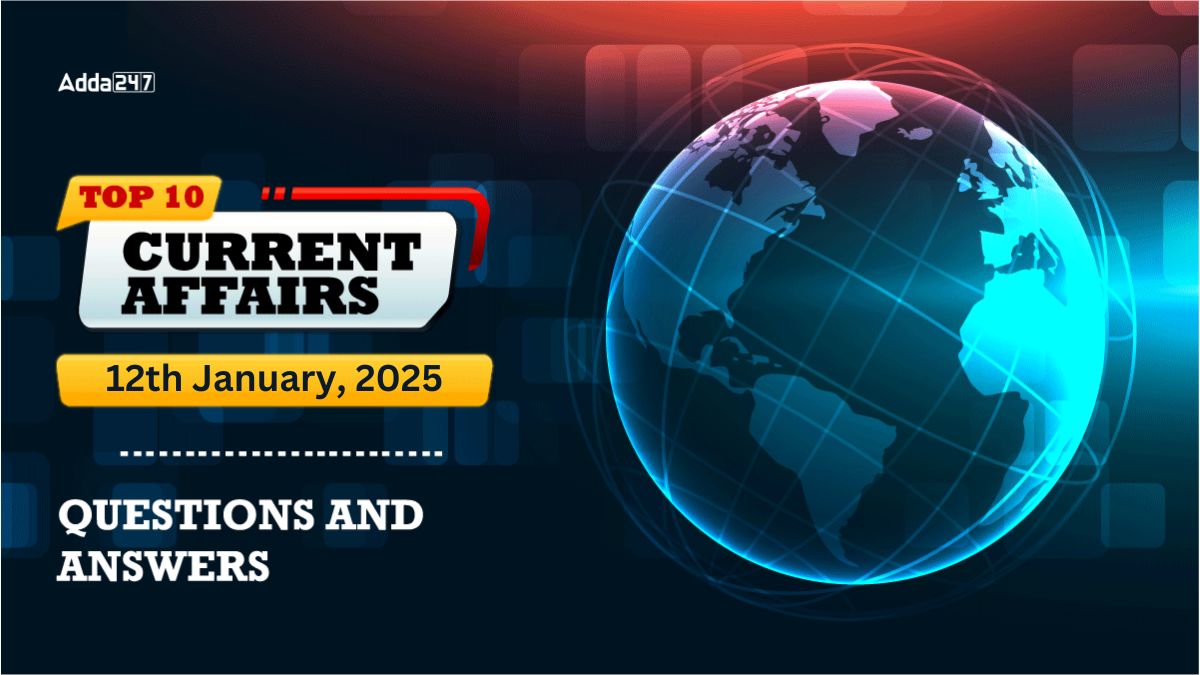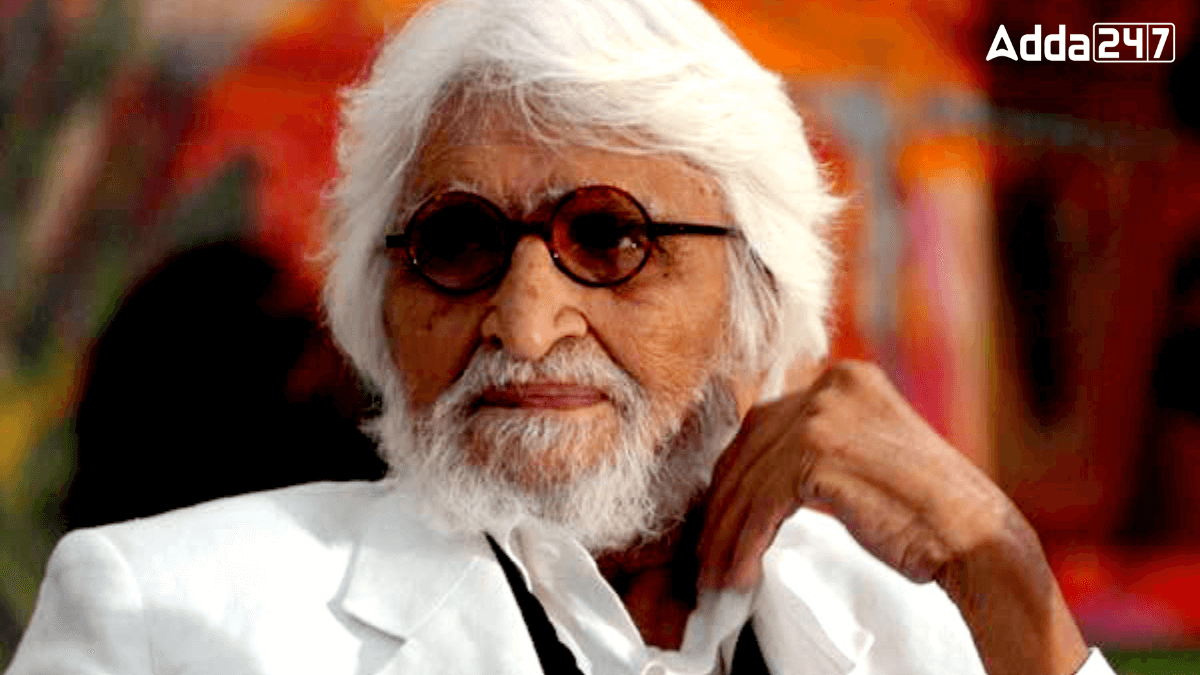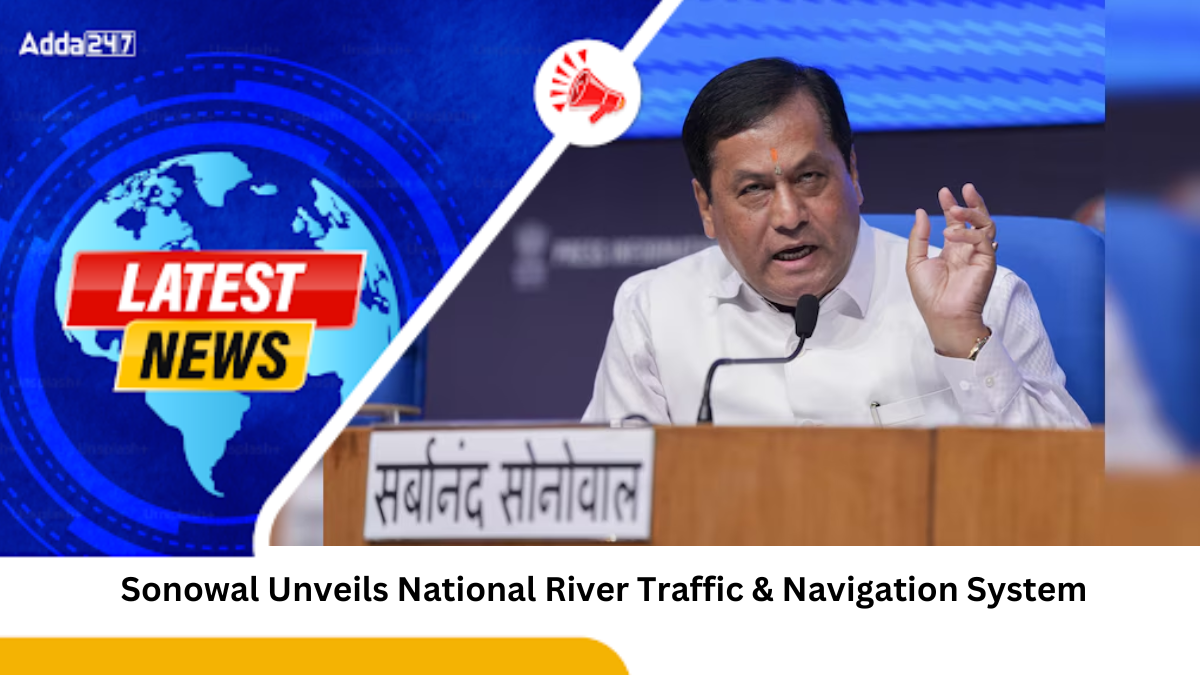Staying updated with key events is crucial for exam success. The Daily Current Affairs Quiz provides an excellent opportunity for aspirants to assess their awareness of important national and international developments. By engaging regularly, candidates can reinforce their knowledge of essential topics like governance, finance, technology, and global affairs, which are commonly tested in SSC, Banking, and other competitive exams.
Q1. Which city will host South India’s first Infectious Disease Research and Diagnostic Laboratory (IRDL)?
(a) Chennai
(b) Bengaluru
(c) Hyderabad
(d) Kochi
Q2. The Z-Morh Tunnel is built under _____ glacier.
(a) Siachen Glacier
(b) Zemu Glacier
(c) Gangotri Glacier
(d) Thajiwas Glacier
Q3. What is India’s export target for the Food & Beverage (F&B), agriculture, and marine product industries within the next five years?
(a) $50 billion
(b) $75 billion
(c) $100 billion
(d) $150 billion
Q4. In 2024, the mean global temperature breached which critical threshold above pre-industrial levels for the first time in recorded history?
(a) 1.0°C
(b) 1.5°C
(c) 2.0°C
(d) 2.5°C
Q5. Which city will host the AI Action Summit 2025?
(a) New York
(b) Paris
(c) Geneva
(d) Tokyo
Q6. What was the growth rate of India’s factory output, measured by the Index of Industrial Production (IIP), in November 2024?
(a) 3.7%
(b) 4.1%
(c) 5.2%
(d) 6.5%
Q7. The Viksit Bharat Young Leaders Dialogue 2025 is a reimagined version of which event?
(a) Pravasi Bharatiya Divas
(b) National Youth Festival
(c) Khelo India Youth Games
(d) International Youth Summit
Q8. Which state received the highest allocation from the disbursement made on January 10, 2025 by the central government?
(a) Bihar
(b) Uttar Pradesh
(c) Maharashtra
(d) West Bengal
Q9. Which natural disaster in India is specifically highlighted in the 2024 Global Water Monitor Report?
(a) Kerala floods
(b) Uttarakhand glacier burst
(c) Wayanad landslides
(d) Assam floods
Q10. Who is the Union Minister of Commerce & Industry in India?
(a) Narendra Singh Tomar
(b) Piyush Goyal
(c) Nitin Gadkari
(d) Dharmendra Pradhan
S1. Ans. (b)
Sol. Bengaluru will host South India’s first IRDL at Bangalore Medical College and Research Institute (BMCRI).
Correct Answer: Bengaluru
Key Points:
- Establishment: BMCRI chosen by ICMR for South India’s first IRDL
- Focus Areas of IRDL: Bacteriology, Mycology, Parasitology (Infectious disease research)
- Impact on Diagnostics: Faster diagnosis, reducing the need to send samples out of state
- Government Support: Part of a Union Government initiative to build specialized laboratories across India
S2. Ans. (d)
Sol. The Z-Morh Tunnel is constructed under the Thajiwas Glacier, bypassing areas prone to landslides and heavy snow during the winter months.
Correct Answer: Thajiwas Glacier
Key Points:
- Tunnel Length: 6.5 km
- Cost: ₹2,680 crore
- Tourism Impact: Boosts winter tourism, especially in Sonamarg
- Strategic Importance: Facilitates a year-round access route to Ladakh, crucial for security and tourism.
S3. Ans. (c)
Sol. India aims to achieve $100 billion in combined exports from the F&B, agriculture, and marine product industries within the next five years.
Correct Answer: $100 billion
Key Points:
- Export Target: $100 billion in F&B, agriculture, and marine products in 5 years.
- Required Growth Rate : 14-15% annually.
- FDI Policy : 100% FDI allowed in F&B sector.
S4. Ans. (b)
Sol. According to the Copernicus Climate Change Service (C3S), the mean global temperature in 2024 exceeded the 1.5°C threshold above pre-industrial levels for the first time, marking a significant warning for climate change.
Correct Answer: 1.5°C
Key Points:
- 2024 marked the first time global temperatures breached 1.5°C above pre-industrial levels.
- The annual average global temperature was 15.1°C, making 2024 the warmest year on record.
- It was 1.60°C higher than pre-industrial levels (1850-1900) and 0.72°C above the 1991-2020 average.
S5. Ans. (b)
Sol. The AI Action Summit 2025 will be held in Paris, France.
Correct Answer: Paris
Key Points:
- PM Modi to attend the AI Action Summit in Paris on February 10-11, 2025, hosted by French President Emmanuel Macron. The summit focuses on AI governance, innovation, combating misinformation, and global AI collaboration.
- Event Name: AI Action Summit
- Event Date: February 10-11, 2025
- Host Country: France
- Host Leader: French President Emmanuel Macron
S6. Ans. (c)
Sol. India’s Index of Industrial Production (IIP) recorded a 5.2% growth in November 2024, the highest in six months.
Correct Answer: 5.2%
Key Points:
- Overall Growth: Factory output grew by 5.2% in November 2024, driven by base effects and festive demand. Cumulative growth for April-November 2024 is 4.1%, down from 6.5% last year.
- Manufacturing: Manufacturing grew 5.8% in November 2024, the highest in 8 months, primarily due to festive season demand.
- Mining: Mining output increased by 1.9% in November, up from 0.9% in October but lower than 7.0% in November 2023.
- Electricity: Electricity output grew by 4.4% in November, an improvement from October’s 2.0% but lower than 5.8% in November 2023.
S7. Ans. (b)
Sol. The event is a reimagined version of the National Youth Festival, aiming to celebrate youth leadership and engagement.
Correct Answer: National Youth Festival
Key Points:
- Organized By: Department of Youth Affairs, Ministry of Youth Affairs & Sports
- Venue: Bharat Mandapam, New Delhi
- Participants: Over 3,000 young leaders from every State and Union Territory
S8. Ans. (b)
Sol. Uttar Pradesh received the highest allocation of ₹31,039.84 crore from the total disbursement.
Correct Answer: Uttar Pradesh
Key Points:
- The Centre released ₹1.73 trillion as tax devolution to states in January 2025, up from ₹89,086 crore in December 2024.
- Aimed to boost states’ capital spending and welfare projects.
- Tax Devolution Percentage: 41% of central taxes allocated to states as per the 15th Finance Commission (2021-26).
- Largest Beneficiary States: Uttar Pradesh (₹31,039.84 crore), Bihar (₹17,403.36 crore), Madhya Pradesh (₹13,582.86 crore), Maharashtra (₹10,930.31 crore).
- 15th Finance Commission Mandate: Covers the period 2021-26; reduced tax share from 42% (2015-20) to 41% due to J&K and Ladakh becoming Union Territories.
S9. Ans. (c)
Sol. The Wayanad landslides in India were highlighted as one of the most destructive water-related disasters in the 2024 Global Water Monitor Report.
Correct Answer: Wayanad landslides
Key Points:
- Global Water Cycle Disruption in 2024 Caused Wayanad Landslides
- Water-related Disasters: 8,700 deaths, 40 million displaced, $550 billion in economic losses due to extreme weather events like floods, droughts, and landslides.
- Wayanad Landslides: 409mm rainfall in 24 hours in July 2024, 375 deaths, 10,000 displaced, $140 million in damages.
S10. Ans. (b)
Sol. Shri Piyush Goyal is the Union Minister of Commerce & Industry.
Correct Answer: Piyush Goyal

